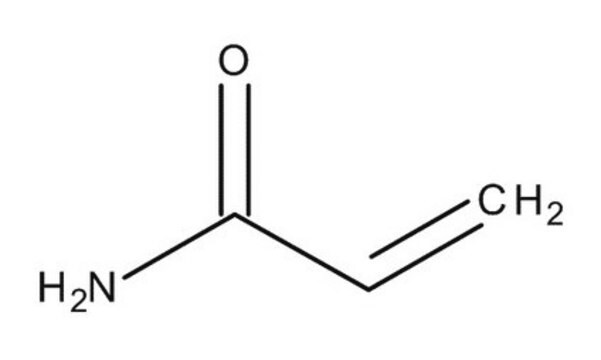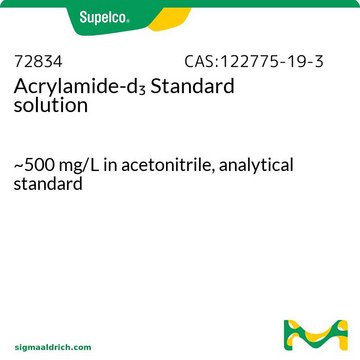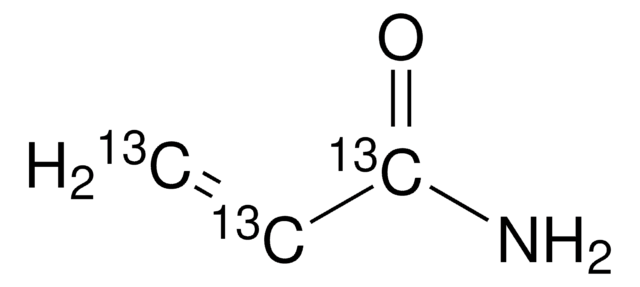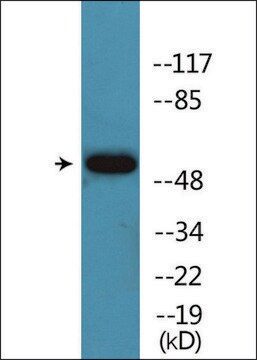Kluczowe dokumenty
01700
Acrylamide
purum, ≥98.0% (GC)
Synonim(y):
2-Propenamide, Polyacrylamide, acrylic amide, akrylamid, Acrylic acid amide
About This Item
Polecane produkty
gęstość pary
2.45 (vs air)
Poziom jakości
ciśnienie pary
0.03 mmHg ( 40 °C)
klasa czystości
purum
Próba
≥98.0% (GC)
bp
125 °C/25 mmHg (lit.)
mp
81-87 °C
82-86 °C (lit.)
rozpuszczalność
water: soluble 200 g/L at 20 °C
temp. przechowywania
room temp
ciąg SMILES
NC(=O)C=C
InChI
1S/C3H5NO/c1-2-3(4)5/h2H,1H2,(H2,4,5)
Klucz InChI
HRPVXLWXLXDGHG-UHFFFAOYSA-N
Szukasz podobnych produktów? Odwiedź Przewodnik dotyczący porównywania produktów
Zastosowanie
Działania biochem./fizjol.
Hasło ostrzegawcze
Danger
Zwroty wskazujące rodzaj zagrożenia
Zwroty wskazujące środki ostrożności
Klasyfikacja zagrożeń
Acute Tox. 3 Oral - Acute Tox. 4 Dermal - Acute Tox. 4 Inhalation - Carc. 1B - Eye Irrit. 2 - Muta. 1B - Repr. 2 - Skin Irrit. 2 - Skin Sens. 1 - STOT RE 1 Oral
Organy docelowe
Peripheral nervous system
Kod klasy składowania
6.1C - Combustible acute toxic Cat.3 / toxic compounds or compounds which causing chronic effects
Klasa zagrożenia wodnego (WGK)
WGK 3
Temperatura zapłonu (°F)
280.4 °F - closed cup
Temperatura zapłonu (°C)
138 °C - closed cup
Środki ochrony indywidualnej
Eyeshields, Faceshields, Gloves, type P3 (EN 143) respirator cartridges
Wybierz jedną z najnowszych wersji:
Masz już ten produkt?
Dokumenty związane z niedawno zakupionymi produktami zostały zamieszczone w Bibliotece dokumentów.
Klienci oglądali również te produkty
Nasz zespół naukowców ma doświadczenie we wszystkich obszarach badań, w tym w naukach przyrodniczych, materiałoznawstwie, syntezie chemicznej, chromatografii, analityce i wielu innych dziedzinach.
Skontaktuj się z zespołem ds. pomocy technicznej






